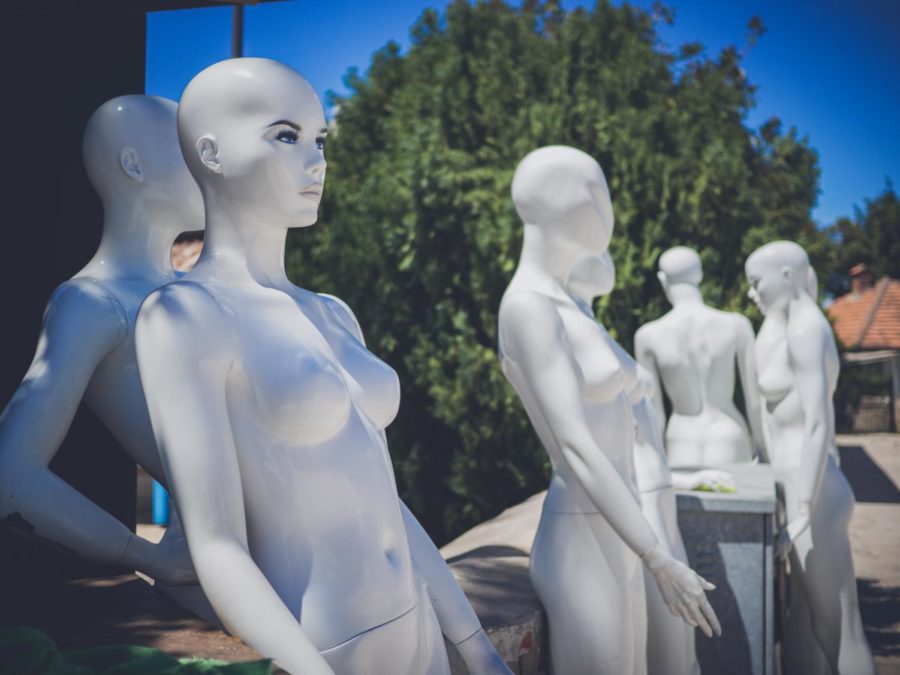Ziemann: Quitting the Kibbe committee
September 3, 2020
In 1987, stylist and self-proclaimed “media star” David Kibbe published a book titled “Metamorphosis.” In it, he hypes himself up as an expert on the shapes of the female body and details what would become his hit Kibbe Body Typing System.
The system has 13 types, each one based on physical characteristics and, according to Kibbe, “personality essence.” Each of the types land on a particular spot on Kibbe’s graphing system (think political compass but for curves).
The x-axis is a little controversial because not many Kibbe interpreters seem to agree on its meaning. Most times, the x-axis shows energy or vibrancy. The y-axis, labeled as yin and yang, measures how round or angular the body and face may be.
Because of the graphing system, the Kibbe system depends on its four extreme types: gamine, natural, romantic and dramatic. The fifth extreme, classic, sits right in the middle of the graph. A single person’s results will mix a bit of all the types together, creating 13 overall.
I stumbled across David Kibbe and his system a couple of months ago, and I decided to attempt to classify myself. I took pictures and videos of myself to attempt to determine how yin or yang my face and body are. I ended up taking two tests and both gave me different results. This was the more exhaustive test I felt represented me more. According to that one, I am apparently a flamboyant gamine.
What does that mean?
I have no idea, and I don’t think Kibbe does either.
It seems that, nowadays, critiques of Kibbe are more popular than the man himself, according to popular subreddit r/femalefashionadvice. This criticism centers around a couple of areas, most of which have something to do with inclusivity.
The first critique is that the 13 body types kind of all look the same. Kibbe based his 13 types on models and actresses, and we can see in all these examples that while each woman is distinctly her own person, if you were to take away the hair and makeup and clothing, the template is the same: thin and light.
Body diversity is nonexistent in this lineup. Every woman has the same figure, the same amount of body fat, the same bone structure, even. Almost everyone has the same skin color, and when Black women are present, they are somewhat of a lighter complexion.
And this is a body typing system! Where are the bigger women, the BIPOC women, the trans women?
Kibbe gave us 13 types meant to represent all women. Where are they?
The second critique is a result of the first one. By only catering to women and not including trans women in that, Kibbe’s system is inherently transphobic.
And that’s harmful.
Many members of the trans population deal with gender dysphoria almost constantly. Gender dysphoria, similar to what is known in medical circles as body dysmorphic disorder, disproportionately affects transpeople. A person with gender dysphoria does not see themselves in the mirror. Gender dysphoria can lead to anxiety and distress about performing their gender.
And as women, we’ve been trained since our teen years (hello, Seventeen Magazine quizzes) to categorize ourselves based on our bodies.
It’s hard as a cis woman when you don’t see yourself represented. It’s even harder for trans women.
In the 33 years since its inception, David Kibbe and his fans have failed to acknowledge trans women in his body typing system. And that’s not fair to them.
In the end, sorting yourself into a body type is all well and good — if it empowers you and if the body types listed actually reflect your body. I don’t think the Kibbe Body Typing System lives up to its (according to Kibbe) illustrious reputation.
But hey, if you disagree with me, that’s fine. David Kibbe has a fan-run Facebook page you can join to become a part of the exclusive community.
The important part everyone should remember regardless of race, gender or sexuality is you are not made for clothes. Clothes are made for you. If some man you’ve never met tells you not to wear a certain piece of clothing, don’t take it as the gospel truth. That man doesn’t know you. He doesn’t know your personality, your style, what makes you tick. What gives him the right to dictate what you can and cannot put on your body?
Wear what makes you feel good.
Feel good in what you wear.







